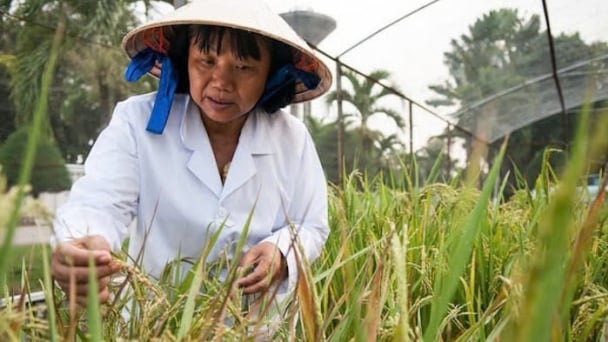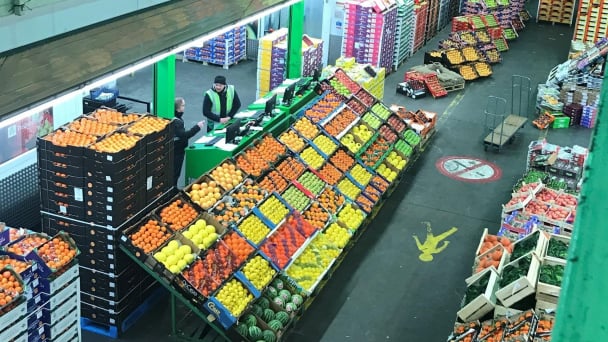May 16, 2025 | 23:42 GMT +7
May 16, 2025 | 23:42 GMT +7
Hotline: 0913.378.918
May 16, 2025 | 23:42 GMT +7
Hotline: 0913.378.918

Freshly harvested pepper. Photo: Son Trang.
According to Mr. Le Viet Anh, the Chief of the Office of the Vietnam Pepper and Spice Association, in October, Vietnam’s pepper exports reached over 18.000 tons, worth 120 million USD. For the first ten months of the year, pepper exports have surpassed the 1 billion USD mark, with a total export value of 1.11 billion USD. The last time Vietnam’s pepper exports exceeded 1 billion USD was in 2017, when the total value reached 1.12 billion USD.
The significant increase in prices is the main factor behind the return of pepper to the "billion-dollar" export category. Over the past ten months, the average export price of Vietnamese black pepper has been 4.971 USD/ton, and that of white pepper has been 6.626 USD/ton. These figures represent an increase of 1.528 USD and 1.671 USD/ton, respectively, compared to the same period in 2023. Thanks to the rise in prices, while the volume of pepper exports declined by 1.9% compared to last year, the export value saw an impressive increase of 48%.
In addition to returning to the 1 billion USD milestone, Vietnamese pepper has managed to maintain its dominant market share in two of its most important export markets: the United States and the European Union.
According to the Department of Import-Export under the Ministry of Industry and Trade, information from the U.S. International Trade Commission reveals that in the first 8 months of 2024, the U.S. imported over 63.000 tons of pepper, with a total value of 307 million USD. This represents a 37% increase in volume and a 45% rise in value compared to the same period last year. Among the pepper-exporting countries, Vietnam stands out as the largest supplier to the U.S. market, with shipments reaching 49,000 tons valued at 235 million USD. This marks an impressive 35% increase in volume and a 47% increase in value compared to the first 8 months of 2023. With these figures, Vietnam's pepper accounts for 78% of the total volume and 77% of the total value of pepper imports into the U.S. during the same period in 2024.
Similarly, according to data from Eurostat, in the first 8 months of 2024, the European Union (EU) imported 45.000 tons of pepper from non-EU countries, valued at nearly 216 million EUR (equivalent to approximately 233 million USD). This represents a 33% increase in volume and a significant 50% increase in value compared to the same period in 2023. Among non-EU suppliers, Vietnam is the largest exporter of pepper to the EU, with shipments totaling 30.000 tons worth 138 million EUR (equivalent to 149 million USD). This marks a notable 42% increase in volume and a 67% surge in value compared to the first 8 months of 2023. As a result, Vietnam's share of the EU’s total pepper imports from non-EU countries stands at 66% of the total volume and 63% of the total value for the first 8 months of 2024.
Although Vietnam’s pepper exports have performed well during the first three quarters of the year, the outlook for the remaining months of 2024 is not expected to be as favorable. One of the key factors contributing to this anticipated slowdown is the current low supply of Vietnamese pepper. Additionally, the demand from China, one of Vietnam’s largest pepper markets, remains relatively weak.
Looking ahead to 2025, however, there is more optimism for Vietnam’s pepper exports. Experts predict that exports will improve as early as the beginning of the year, particularly due to the expected resurgence of demand from China. Moreover, following Indonesia’s recent harvest, global pepper supply is not expected to experience any substantial increase until February 2025. This is seen as a positive development for Vietnam, as it will likely be able to capitalize on the supply during its own upcoming harvest season.

A pepper garden in Chu Se district, Gia Lai. Photo: Son Trang.
The Department of Import-Export has predicted that, in the short term, global pepper prices will experience fluctuations and are likely to follow a downward trend. However, this decline in prices is not expected to persist for long. The primary reason for this is the ongoing limitation in global pepper supply, combined with an increase in demand driven by seasonal factors. Specifically, in large importing markets such as the United States, the European Union, and Asia, demand is expected to rise. However, in regions like the Middle East and China, demand continues to be sluggish, which may dampen overall global trade. At the same time, as stockpiles decrease, both producers and distributors are becoming more cautious about releasing their stock for sale.
In terms of production, Brazil is currently the second-largest producer and exporter of black pepper globally, accounting for approximately 17-18% of the world’s total supply. However, due to a decrease in production, Brazil's pepper exports for the 2024 harvest are expected to decline for the third consecutive year. Meanwhile, Vietnam, the world’s largest pepper exporter, is also facing challenges. The country’s 2025 harvest is expected to be delayed by about one month compared to previous years. This delay in production will contribute to an additional supply shortage in the global market. The limited global supply, coupled with rising demand in key markets, is expected to have a positive impact on global pepper prices, potentially driving prices higher in the near future.
In Vietnam, the price of pepper is also currently trending downwards. Mr. Hoang Phuoc Binh, Vice President of the Chu Se Pepper Association (Gia Lai), explained that the decline in prices within Vietnam is primarily due to the fact that Indonesia has just entered its harvest season. On the other hand, as the coffee harvest season begins, many pepper dealers are taking the opportunity to sell off their pepper stocks in order to invest in purchasing coffee.
Mr. Binh further predicted that the price of pepper in the 2025 harvest season would be higher than in 2024, when the price peaked at approximately 6.7 USD/kg. The main reason for this expected price increase is the prolonged heatwave that affected Vietnam at the beginning of 2024. This weather pattern has had a considerable negative impact on the productivity of pepper plants, which is expected to lead to a lower production yield in the 2025 harvest. This decline in yield is not just limited to Vietnam, but is also forecasted for other major pepper-producing countries around the world.
Additionally, many pepper farmers in Vietnam now have alternative sources of income from crops such as coffee, durian, and other fruit trees. Because of this diversification in income, they are less inclined to rush to sell their pepper immediately after harvest. Instead, most farmers prefer to hold on to their stock and wait for more favorable prices.
Translated by Phuong Linh
![Multi-channel, multi-directional Vietnamese agricultural markets: [7] Deep processing makes global reach easy](https://t.ex-cdn.com/nongnghiepmoitruong.vn/608w/files/huytd/2025/05/16/2946-che-bien-sau-chia-khoa-vang-nang-tam-nong-san-viet-tren-ban-do-the-gioi-080603_110-093858.jpg)
(VAN) The application of deep processing technology is helping Vietnamese agricultural products enhance their value, create competitive advantages, and open doors to conquer global consumers.
![Multi-channel, multi-directional Vietnamese agricultural markets: [6] Agri products go online](https://t.ex-cdn.com/nongnghiepmoitruong.vn/608w/files/content/2024/12/10/1-113313_954.jpg)
(VAN) Bringing agri products onto e-commerce platforms is an effective way to build a brand that many businesses, cooperatives, and agricultural production households are doing.

(VAN) Veterinary training should focus on quality, not just quantity. Veterinarians also need more options to pursue specialized training.

(VAN) The veterinary industry needs to be viewed objectively and further invested in to properly demonstrate its role and importance in the new context.

(VAN) The number of veterinarians graduating each year is not enough to meet actual needs, hence a difficult problem for the growing livestock industry.

(VAN) The strategic partnership between Cambodia, the Philippines, Vietnam, and CGIAR ensures that innovative solutions effectively address national priorities for food system development.

(VAN) This was affirmed by the UK Minister of State at the Department for Environment, Food and Rural Affairs during a working session with Deputy Minister Tran Thanh Nam on May 13.